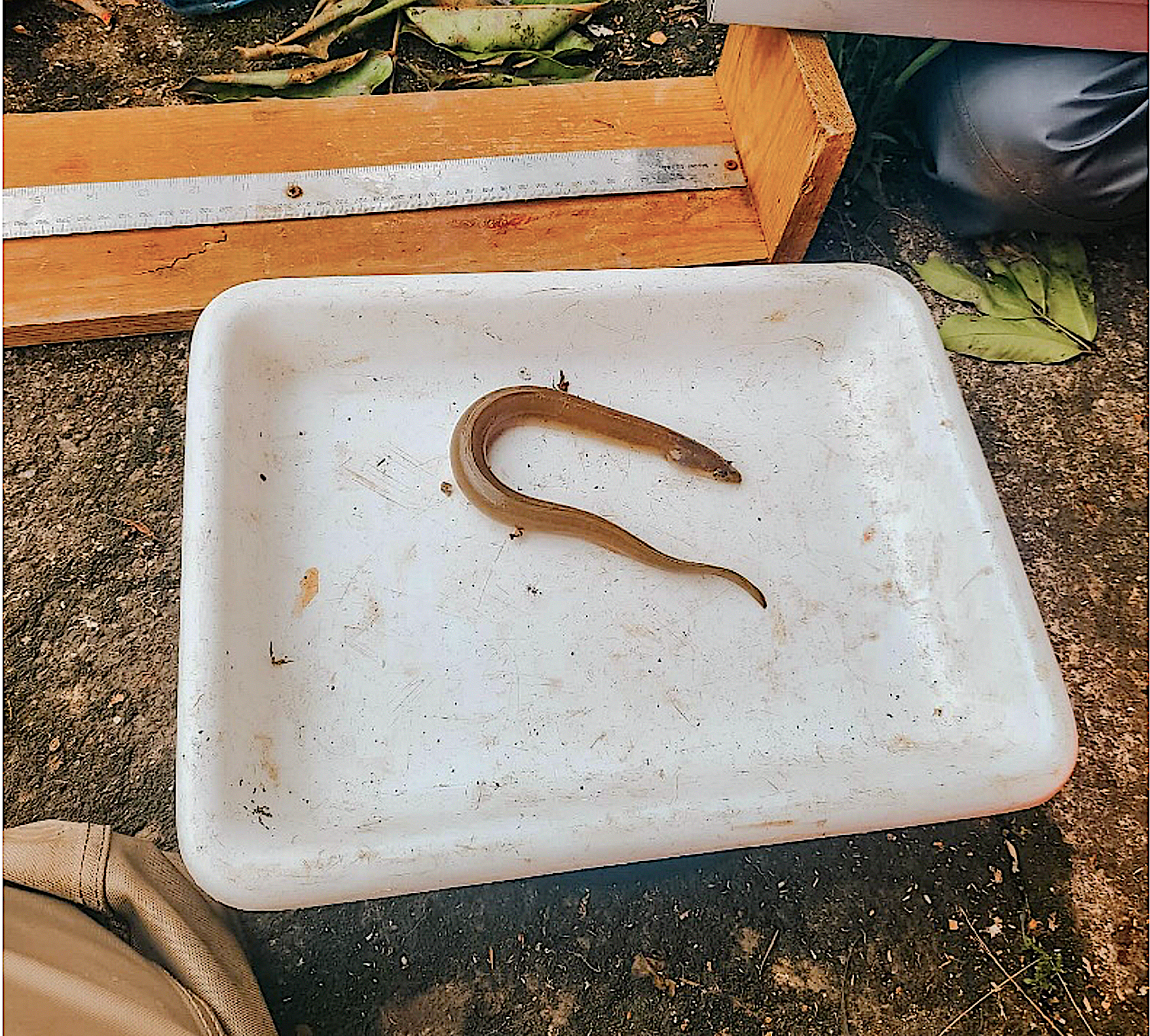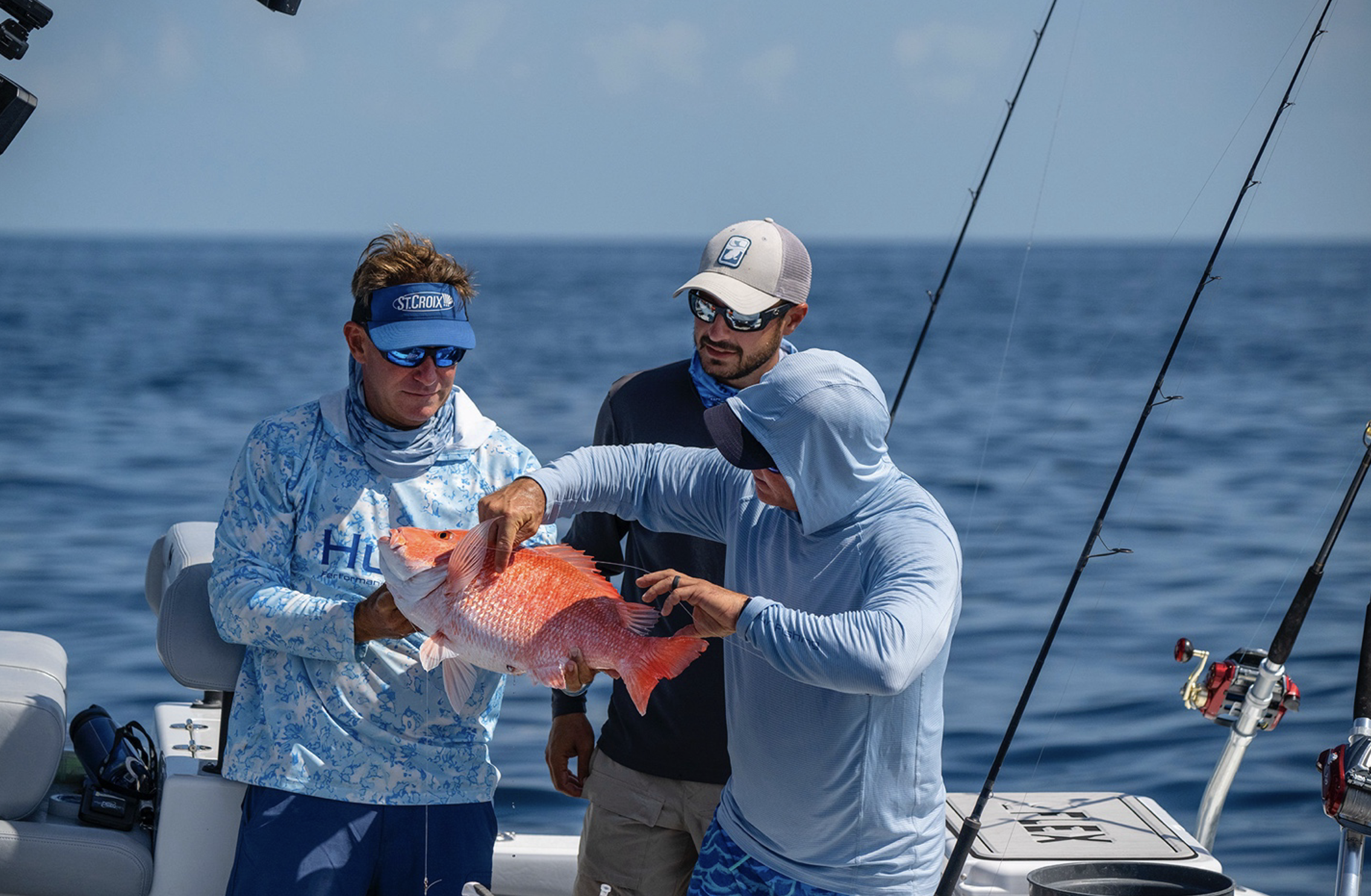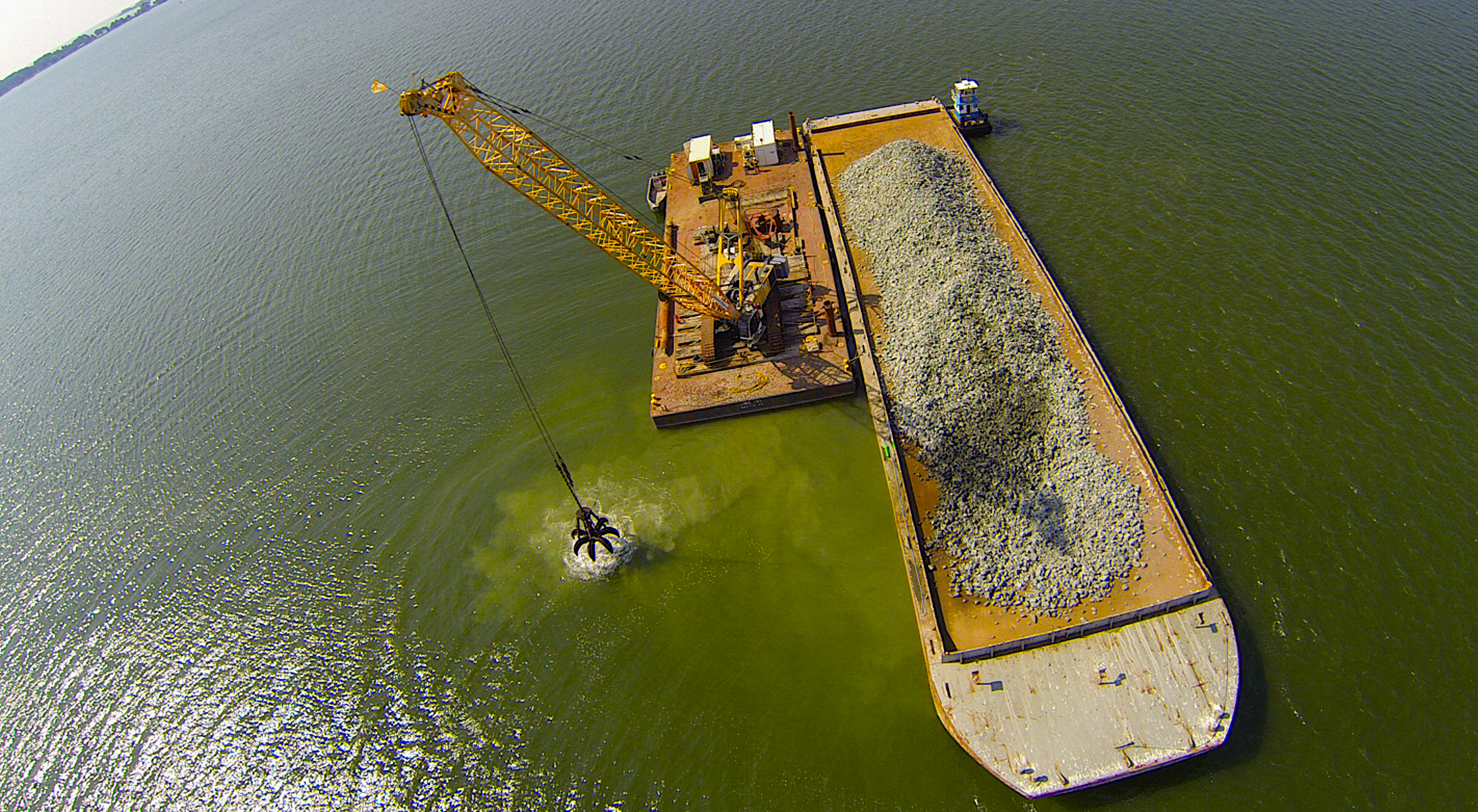What’s the Status of American Eels in North Carolina’s Tidal Creeks?

Scientists looked at whether development on tidal creek terrain affected the survival rate of yellow-phase American eels.
Research Need
American eels support recreational and commercial fisheries in the eastern United States and are one of the most mysterious creatures in our waters. They are a “catadromous” species, which means they spend their larval stages in ocean environments and their juvenile and adult stages between coastal and freshwater environments. Because they move freely between these environments, they potentially are a resilient species.
But in recent years, the perceived health of the species — and the perceived health of the tidal creek habitat of juvenile eels — has been on the decline.
While habitat loss, poor water quality, and overfishing might all play a role in the decline of the American eel population, determining which factors actually contribute to fewer numbers of American eels is much more challenging.
Given that little is known about American eels in coastal estuaries, tidal creeks present an interesting landscape to explore the link between habitat and juvenile eel abundance and survival rates.
What did they study?
From 2015 to 2019, scientists from North Carolina State University studied how development along tidal creeks affected the catch, survival, and mortality rates of yellow-phase American eels. The research team trapped and PIT tagged 68 yellow-phase American eels and then recaptured eels at eight weeks to estimate catch rates in tidal creeks in Carteret County, North Carolina.
The team used watershed runoff and saltwater marsh cover as indicators of development in this region.
What did they find?
Survival of yellow American eels is low in comparison to other locations along coastal habitats on the Atlantic. These low survival rates might be due to natural causes or fishing mortality in this region, but this needs further study.
Development along tidal creeks did not appear to reduce yellow-phase American eel catch rates. In fact, culverts even had a positive effect on the catch rates of American eel, because they provide poorly lit shelter.
However, this does not rule out possible adverse effects that large-scale development might have on the survival of yellow-phase American eels.
Anything else?
Yellow-phase American eels caught for this study were between 6 and 18 inches long. Catch rates were higher in the spring and lower in the winter.
Reading
Rudershausen, P. J., Lee, L. M., Lombardo, S. M., Merrell, J. H. & Buckel, J. A. (2019). Survival and Habitat of Yellow-Phase American Eels in North Carolina Tidal Creeks. Transactions of the American Fisheries Society, 148 (1), 978 – 990.
This research was partially funded by North Carolina Sea Grant Project R/MG-1502.
Summary compiled by Ambar Torres-Molinari.
Lead photo: Yellow-phase American eel caught in a stream of Puerto Rico, by Samiris Suleiman-Orozco.
The text from Hook, Line & Science is available to reprint and republish at no cost, but only in its entirety and with this attribution: Hook, Line & Science, courtesy of Scott Baker and Sara Mirabilio, North Carolina Sea Grant.
- Categories:



